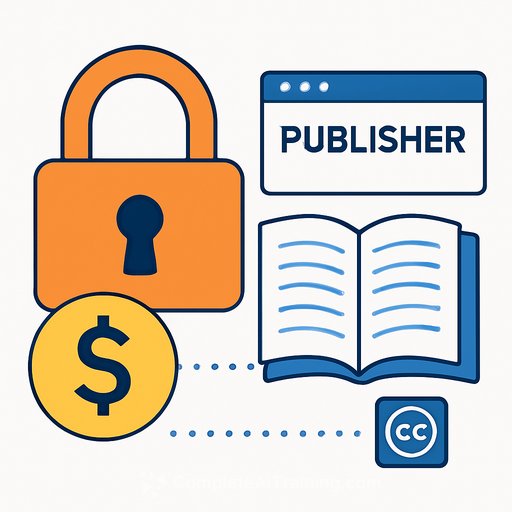Taylor Swift's alleged AI promo is a rare miss - and a clear lesson for creatives
The rollout for The Life of a Showgirl has been massive: city-wide scavenger hunts, QR codes, and a tidal wave of social content. But the QR-linked videos circulating online appeared to carry the hallmarks of generative AI. For an artist and brand that usually sweat every detail, that's a mismatch. And it's exactly the kind of slip that creative teams can prevent.
To be fair, these clips seem like add-ons, not the core of the campaign. Still, they feed the larger narrative, drive virality, and ultimately aim to sell the album. If the rest of the launch showcases handcrafted sets and tight creative control (see the making-of for The Fate of Ophelia), why let obvious AI tells into the final cut? Reports say the videos were later removed from YouTube, but the conversation is already out there. Taylor has yet to comment.
Why this matters to brand craft
Big brands run on trust. Consistency across every touchpoint is non-negotiable. When the main product is artisanal and the promo feels auto-generated, the contrast breaks the spell. Fans notice. Designers notice. And the story becomes about process, not product.
The common AI "tells" that break immersion
- Wonky geometry: bent lines, warped objects, rubbery architecture
- Procedural textures: uncanny patterns, smeared surfaces, melting edges
- Temporal jitter: flicker between frames, shape shifts, unstable lighting
- Text artifacts: gibberish signage, letter drift, inconsistent typography
- Human details: awkward hands, misaligned eyes, odd motion cadence
Use AI without burning brand equity
- Define intent: concept exploration and moodboards are fine; final hero assets demand human finish
- Set a quality bar: "no raw model output" rule for anything public-facing
- Add a human layer: art direction, paint-overs, roto, comp, and typography pass by real designers
- Budget the polish: allocate time and money for cleanup, not just generation
- QA like a hawk: multi-device checks, motion review at 0.5x speed, freeze-frame scrutiny
- Be clear on disclosure: align with a policy for synthetic media and brand transparency
- Have a fallback: if quality slips, replace with human-made assets immediately
Operations checklist for creative teams
- Creative brief states where AI is allowed (ideation, pre-vis, internal comps) and where it isn't (final ads, flagship promos)
- Technical standards: resolution, frame cadence, typography rules, color pipeline, brand motion system
- Review gates: art director → design lead → brand owner sign-off before publish
- Artifact sweep: geometry, text, hands, perspective, reflections, shadows, continuity
- Legal and rights: model sources, training data concerns, likeness risks, disclosure language
- Rollout plan: A/B versions ready; quick takedown and replacement path if issues surface
Optics matter: environment and ethics
Fans flagged environmental concerns, including the water footprint tied to AI systems. If you use AI at scale, address that head-on. This study outlines the issue in depth: Making AI Less Thirsty.
If your campaign includes synthetic media, align to widely recognized guidelines like the Partnership on AI's Synthetic Media Framework. It protects creative integrity and reduces brand risk.
A simple production flow that works
- Concept: human-led narrative and visual language
- Generate: AI for quick ideation only, with strict prompts and style boards
- Design pass: human layout, type, color, and composition
- Motion pass: human animation standards; fix perspective and continuity
- Finishing: paint-overs, comp, grain, and brand LUTs to unify look
- Quality wall: artifact hunt, device checks, legal review
- Release and monitor: watch early audience feedback; swap assets if needed
Bottom line for creatives
AI can speed exploration. It shouldn't cheapen the finale. Protect the craft by keeping human hands on the wheel for anything public-facing, and set rules that keep experiments from shipping as finished work.
If your team needs to tighten its AI workflow and guardrails, you can explore focused training paths here: Prompt Engineering Resources.
Your membership also unlocks:





